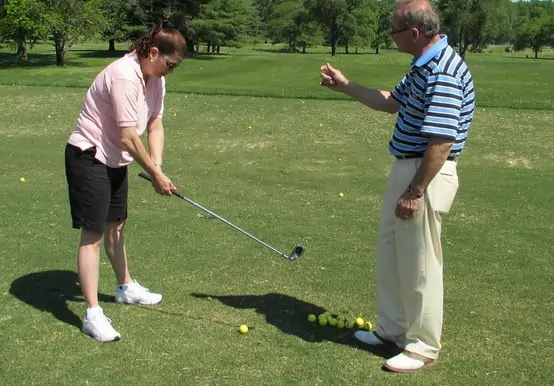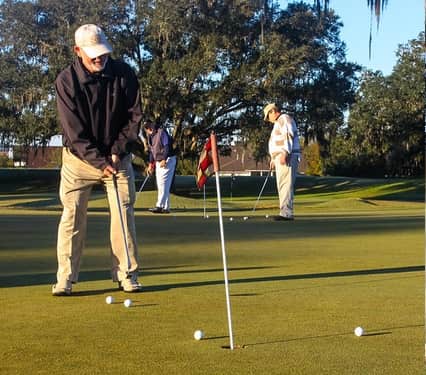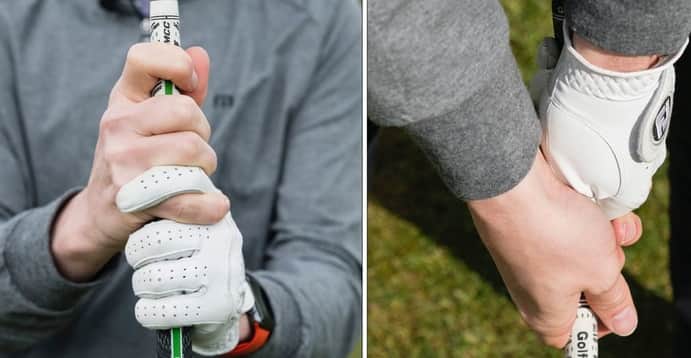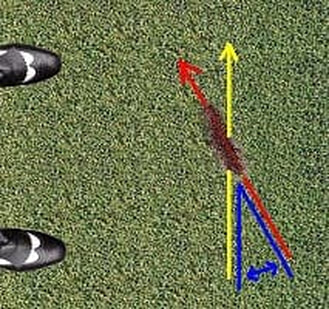25 Golf Tips for Beginners
Golf can be a challenging game to learn, but it can be a fun and rewarding experience if you have the right tips and strategies. If you're just starting out, it can be hard to know where to start. That's why we've compiled this list of 25 golf tips for beginners. Whether you're a complete beginner or looking to hone your skills, these tips can help you become a better golfer. From basic techniques to tips for improving your swing, this list has something for everyone. So, grab your clubs and let's get started!

A Beginner's Golf Guide: What Every New Golfer Should Know When Picking Up the Game
Golf is a fantastic sport for people of all ages and abilities. Whether you’re a complete beginner or just need to brush up on your skills, these 25 golf tips for beginners will help you get off to a great start.
First and foremost, it’s important to research the basics. Learn the rules of golf, the different types of clubs and golf etiquette. This will help you feel more comfortable on the course and ensure you don’t make any rookie mistakes. You may also want to take some time to learn popular game formats such as Captain's Choice.
Take lessons from a PGA professional to learn the principles of a proper grip, stance, and swing. Taking a golf lesson from an experienced instructor is a great way to hone the fundamentals of a solid golf swing. As a beginner, golf instruction from an experienced PGA professional is the best way to quickly learn the game. Speak to your local pro shop to find out what classes they offer.
It’s also important to find the right clubs. Make sure you have the right size and weight of clubs for your body and skill level. Ask your local pro or research online to find out which clubs are most suitable for you.
Of course, you need to dress appropriately, too. Make sure you wear comfortable, appropriate golf attire when playing a round. Don’t forget to wear comfortable, supportive shoes.
Finally, be mindful of the course. Respect the golf course and the other players by playing at a reasonable pace. Track your progress as you learn with our golf handicap tracker.
First and foremost, it’s important to research the basics. Learn the rules of golf, the different types of clubs and golf etiquette. This will help you feel more comfortable on the course and ensure you don’t make any rookie mistakes. You may also want to take some time to learn popular game formats such as Captain's Choice.
Take lessons from a PGA professional to learn the principles of a proper grip, stance, and swing. Taking a golf lesson from an experienced instructor is a great way to hone the fundamentals of a solid golf swing. As a beginner, golf instruction from an experienced PGA professional is the best way to quickly learn the game. Speak to your local pro shop to find out what classes they offer.
It’s also important to find the right clubs. Make sure you have the right size and weight of clubs for your body and skill level. Ask your local pro or research online to find out which clubs are most suitable for you.
Of course, you need to dress appropriately, too. Make sure you wear comfortable, appropriate golf attire when playing a round. Don’t forget to wear comfortable, supportive shoes.
Finally, be mindful of the course. Respect the golf course and the other players by playing at a reasonable pace. Track your progress as you learn with our golf handicap tracker.
Master the Fundamentals
Golf is a challenging and rewarding game that requires skill and dedication to master. For those just starting out, it can seem daunting to get up to speed with the game. To help new golfers get on track, here are 25 golf tips for beginners:
Get familiar with the basic rules and etiquette of the game. This will help ensure you have a more enjoyable experience and make the game more enjoyable for everyone.
Take lessons and practice your swing regularly to help improve your technique. Working with a qualified instructor can help you identify areas for improvement and help you focus on the fundamentals of your swing. Getting a hitting mat and golf net to practice at home can help you build a good foundation for improvement.
Develop a pre-shot routine to help you stay focused on each shot. This should include a practice swing, visualizing the shot, and taking your time to make sure your stance, grip, and alignment are correct.
Make sure you have the proper equipment for your skill level. Golf clubs that are too light or too heavy can make it more difficult to control the ball. Getting fit for your clubs is a good way to ensure you have the equipment for your game.
Work on your short game, such as chipping and putting. A great short game can help you lower your scores and give you an edge over the competition.
Always warm up before playing and stretch after each round to prevent injury.
Get familiar with the basic rules and etiquette of the game. This will help ensure you have a more enjoyable experience and make the game more enjoyable for everyone.
Take lessons and practice your swing regularly to help improve your technique. Working with a qualified instructor can help you identify areas for improvement and help you focus on the fundamentals of your swing. Getting a hitting mat and golf net to practice at home can help you build a good foundation for improvement.
Develop a pre-shot routine to help you stay focused on each shot. This should include a practice swing, visualizing the shot, and taking your time to make sure your stance, grip, and alignment are correct.
Make sure you have the proper equipment for your skill level. Golf clubs that are too light or too heavy can make it more difficult to control the ball. Getting fit for your clubs is a good way to ensure you have the equipment for your game.
Work on your short game, such as chipping and putting. A great short game can help you lower your scores and give you an edge over the competition.
Always warm up before playing and stretch after each round to prevent injury.
Start with the Short Game
Golf is an enjoyable sport for both experienced and beginner players alike. If you’re just getting started, spend about half your time on the short game as it can really improve your scoring.
Start with the short game. Chipping and putting are two of the most important skills to master in the game of golf. If you’re just starting out, focus your practice sessions on mastering these two essential elements. Learn the basics of the short game, such as developing a few shots you can rely on when you’re around the green.
Consider taking lessons from a golf pro. Professional golf lessons can help you learn proper techniques and get feedback on your short game. A professional can also help you identify areas where you need to improve and provide useful tips and advice.
Practice regularly and keep it fun. Golf is a game that requires practice and patience. Set aside time each week to practice and develop your skills. Getting a home putting green can make it easier to practice and help you improve. Make sure to take breaks and have fun while you’re playing. Relax and enjoy the game, don’t get too caught up in the results.
Start with the short game. Chipping and putting are two of the most important skills to master in the game of golf. If you’re just starting out, focus your practice sessions on mastering these two essential elements. Learn the basics of the short game, such as developing a few shots you can rely on when you’re around the green.
Consider taking lessons from a golf pro. Professional golf lessons can help you learn proper techniques and get feedback on your short game. A professional can also help you identify areas where you need to improve and provide useful tips and advice.
Practice regularly and keep it fun. Golf is a game that requires practice and patience. Set aside time each week to practice and develop your skills. Getting a home putting green can make it easier to practice and help you improve. Make sure to take breaks and have fun while you’re playing. Relax and enjoy the game, don’t get too caught up in the results.
Improve your Golf Putting Technique with These 4 Easy Tips
Golf can be an intimidating game for beginners, but with these 25 golf tips, you’ll be playing your best in no time.
First and foremost, practice regularly. Consistent practice is essential for improving your putting technique. Take some time each day to focus on your putting stroke and technique, and gradually work up to longer putts. It may seem daunting at first, but the more you practice, the more your confidence will grow. Learn to control the speed of your putts. Hitting a putt too hard or too soft is the biggest mistake you can make on the green.
Another important tip is to use the right equipment. Make sure to use the right putter for your stroke type and your height, as this can make all the difference when it comes to improving your technique. A good putter should feel like an extension of your body, and a properly sized putter can greatly improve your accuracy.
Another important factor is alignment. Alignment is key when it comes to putting. Make sure your body is properly aligned with the target to ensure a consistent stroke. A good way to check your alignment is by taking a practice swing and looking at the line your club makes. This will help you adjust your stance and ensure that you are properly aligned. Using an alignment stick or another club can help you. Putting mirrors are also a great way to get feedback on your stroke.
Finally, develop a good tempo. A good tempo can help you achieve a smoother putting motion. Try to keep your backswing and follow through roughly the same length and pace can help you more consistently control the direction and distance of your shots.
First and foremost, practice regularly. Consistent practice is essential for improving your putting technique. Take some time each day to focus on your putting stroke and technique, and gradually work up to longer putts. It may seem daunting at first, but the more you practice, the more your confidence will grow. Learn to control the speed of your putts. Hitting a putt too hard or too soft is the biggest mistake you can make on the green.
Another important tip is to use the right equipment. Make sure to use the right putter for your stroke type and your height, as this can make all the difference when it comes to improving your technique. A good putter should feel like an extension of your body, and a properly sized putter can greatly improve your accuracy.
Another important factor is alignment. Alignment is key when it comes to putting. Make sure your body is properly aligned with the target to ensure a consistent stroke. A good way to check your alignment is by taking a practice swing and looking at the line your club makes. This will help you adjust your stance and ensure that you are properly aligned. Using an alignment stick or another club can help you. Putting mirrors are also a great way to get feedback on your stroke.
Finally, develop a good tempo. A good tempo can help you achieve a smoother putting motion. Try to keep your backswing and follow through roughly the same length and pace can help you more consistently control the direction and distance of your shots.
Perfect Your Irons, Fairway Woods, and Hybrids
With your short game getting more solid, it is time to move back from the green and to the approach shots you'll be making toward the green. You'll most often make this with irons, fairway woods, or hybrid clubs.
Always check your stance and grip when using irons and hybrids. A good stance should be parallel to the target line with your feet roughly shoulder-width apart. A correct golf grip involves placing the club handle diagonally across the fingers of the left hand (for right-handed players), with the "V" shape formed by the thumb and index finger pointing towards the right shoulder. The right hand then wraps around the handle, with the pinky finger overlapping the gap between the index and middle fingers of the left hand. The grip should be firm but not too tight, allowing for a fluid swing and control over the clubface.
Make sure to adjust your ball position depending on the club you are using. Start with the ball in the middle of your stance for the shortest clubs. As the clubs get longer, the ball should be moved a little bit forward from the middle, but not quite to your front foot with your longest fairway woods.
Keep your eyes on the ball throughout the entire swing. Focusing on the ball will help you generate a more consistent shot. Take the time to practice with your irons and hybrids. Try different distances and trajectories to find the clubs that work best for you.
Use your body weight to help you generate power. Shifting your weight forwards during the backswing and onto your left side during the downswing will help you hit the ball further. Use a divot to measure the consistency of your shots. If the divot is consistently deep and straight, it means you are hitting the ball in the same spot every time.
Always check your stance and grip when using irons and hybrids. A good stance should be parallel to the target line with your feet roughly shoulder-width apart. A correct golf grip involves placing the club handle diagonally across the fingers of the left hand (for right-handed players), with the "V" shape formed by the thumb and index finger pointing towards the right shoulder. The right hand then wraps around the handle, with the pinky finger overlapping the gap between the index and middle fingers of the left hand. The grip should be firm but not too tight, allowing for a fluid swing and control over the clubface.
Make sure to adjust your ball position depending on the club you are using. Start with the ball in the middle of your stance for the shortest clubs. As the clubs get longer, the ball should be moved a little bit forward from the middle, but not quite to your front foot with your longest fairway woods.
Keep your eyes on the ball throughout the entire swing. Focusing on the ball will help you generate a more consistent shot. Take the time to practice with your irons and hybrids. Try different distances and trajectories to find the clubs that work best for you.
Use your body weight to help you generate power. Shifting your weight forwards during the backswing and onto your left side during the downswing will help you hit the ball further. Use a divot to measure the consistency of your shots. If the divot is consistently deep and straight, it means you are hitting the ball in the same spot every time.
How to Hit Down on the Golf Ball for Your Iron Shots
Golfers should aim to hit down on a golf ball with an iron because it helps create the desired backspin on the ball, leading to better control and accuracy. When the clubface strikes the ball in a descending motion, the loft of the club compresses the ball against the ground, which causes the ball to spin backwards. This backspin keeps the ball in the air longer and helps it stop faster on the green. Therefore, hitting down on the ball is crucial for achieving the correct trajectory and distance control in iron shots.
To hit down on a golf ball, you need to make contact with the ball before hitting the ground. The correct technique involves positioning the ball slightly ahead of center in your stance and making a downward motion as you swing the club. Start by taking a slightly steeper angle of approach, allowing the clubhead to contact the ball first and then the turf. You can achieve this by focusing on keeping your hands ahead of the clubhead at impact, compressing the ball against the ground and creating the desired backspin. Practice this motion at the range with short iron shots, and gradually build up to longer clubs as you gain more confidence in hitting down on the ball.
If you are struggling to hit down on the ball, you may be attempting to lift it. Attempting to lift the ball into the air is the wrong approach. Hit down on the ball and let the club do the work for you.
To hit down on a golf ball, you need to make contact with the ball before hitting the ground. The correct technique involves positioning the ball slightly ahead of center in your stance and making a downward motion as you swing the club. Start by taking a slightly steeper angle of approach, allowing the clubhead to contact the ball first and then the turf. You can achieve this by focusing on keeping your hands ahead of the clubhead at impact, compressing the ball against the ground and creating the desired backspin. Practice this motion at the range with short iron shots, and gradually build up to longer clubs as you gain more confidence in hitting down on the ball.
If you are struggling to hit down on the ball, you may be attempting to lift it. Attempting to lift the ball into the air is the wrong approach. Hit down on the ball and let the club do the work for you.
Maximize Your Driving Accuracy and Distance
Driving a ball on the first tee can be an intimidating task for beginners, but a few tips will help you get started on the right track.
To effectively drive a golf ball, you need to start by setting up correctly. Begin by placing the ball in line with your left heel (for right-handed players) and aligning your body parallel to the target line. Your feet should be shoulder-width apart, and your weight should be balanced evenly on both feet. As you swing, aim to create a smooth, sweeping motion that generates power and speed. Keep your head still and your eyes fixed on the ball, maintaining a smooth tempo and allowing your hips to rotate through the shot. As you finish your swing, your weight should shift onto your left foot, and your hands should finish high, with your torso pointing towards the target. Remember to stay relaxed and focused, and practice regularly to improve your technique and consistency.
The driving range is a great place to practice your swing and accuracy. Take the time to find the right tee height and ball position, and make sure your eyes are focused on the ball before and during your swing. Maintaining your balance and posture throughout your swing is also essential.
You can also practice with a golf simulator to improve your accuracy and distance. Incorporate drills and practice swings to hone your skills and use a launch monitor to track your progress. Additionally, it’s important to get the right equipment that fits your skill level and body type.
To effectively drive a golf ball, you need to start by setting up correctly. Begin by placing the ball in line with your left heel (for right-handed players) and aligning your body parallel to the target line. Your feet should be shoulder-width apart, and your weight should be balanced evenly on both feet. As you swing, aim to create a smooth, sweeping motion that generates power and speed. Keep your head still and your eyes fixed on the ball, maintaining a smooth tempo and allowing your hips to rotate through the shot. As you finish your swing, your weight should shift onto your left foot, and your hands should finish high, with your torso pointing towards the target. Remember to stay relaxed and focused, and practice regularly to improve your technique and consistency.
The driving range is a great place to practice your swing and accuracy. Take the time to find the right tee height and ball position, and make sure your eyes are focused on the ball before and during your swing. Maintaining your balance and posture throughout your swing is also essential.
You can also practice with a golf simulator to improve your accuracy and distance. Incorporate drills and practice swings to hone your skills and use a launch monitor to track your progress. Additionally, it’s important to get the right equipment that fits your skill level and body type.
Golf Mobility Can Increase Distance
Golf can be a fun and exciting game, but it is important to prepare your body to make a golf swing. This involves flexibility, balance, and strength. We have a few tips below to help you ensure your body is ready to golf and you won't be struggling on the course.
Increase your flexibility: Improving your flexibility can help you increase your golf swing, resulting in longer drives and more distance. Consider incorporating stretching and yoga into your routine to increase your range of motion and help you hit the ball farther. Focus on torso rotation, hip mobility, shoulder range of motion, and hamstring flexibility. These all help you make a full turn on your backswing.
Build your core strength: Increasing your core strength can help you generate more power and distance in your golf swing. Focus on strengthening your abdominal muscles, back, and hips with exercises such as planks, squats, and lunges.
Improve your balance: Having good balance during your golf swing can help create more power, resulting in increased distance. Work on balance exercises such as standing on one leg, or trying to balance on a bosu ball.
Practice your mobility exercises: Mobility exercises such as stretching and strengthening can improve your range of motion and help you hit the ball farther. Spend some time stretching before and after your rounds to keep your muscles loose and your body feeling good.
Increase your flexibility: Improving your flexibility can help you increase your golf swing, resulting in longer drives and more distance. Consider incorporating stretching and yoga into your routine to increase your range of motion and help you hit the ball farther. Focus on torso rotation, hip mobility, shoulder range of motion, and hamstring flexibility. These all help you make a full turn on your backswing.
Build your core strength: Increasing your core strength can help you generate more power and distance in your golf swing. Focus on strengthening your abdominal muscles, back, and hips with exercises such as planks, squats, and lunges.
Improve your balance: Having good balance during your golf swing can help create more power, resulting in increased distance. Work on balance exercises such as standing on one leg, or trying to balance on a bosu ball.
Practice your mobility exercises: Mobility exercises such as stretching and strengthening can improve your range of motion and help you hit the ball farther. Spend some time stretching before and after your rounds to keep your muscles loose and your body feeling good.
Manage the Course Like a Pro
Golf can be a difficult game to master, but with the right tips and tricks, even a beginner can make it look easy. Here are some golf strategy tips that will help you successfully navigate your way around the golf course.
Get to know the course: Before teeing off, take a minute to familiarize yourself with the layout of the course. This will help you plan your shots and save time when you’re out on the course.
Manage the course like a pro: Identify the trouble spots on the shot in front of you. Don't miss the green on the short side, hit away from trouble like water or out of bounds. Avoid the big mistakes and don't make two mistakes in a row.
Know the distance you hit your clubs: The most common mistake in golf is to leave the ball short of the target. Golfers overestimate how far they hit the ball. Know the carry distance you can hit each club and make sure to pick the right club for each shot.
Study the greens: Get to know the terrain and understand how the ball will roll, so you can plan your shot accordingly. Uphill putts are much easier than downhill ones. Try to leave the ball where you won't be struggling to get the ball in the hole.
Read the wind: Pay attention to the wind direction and know how it will affect your shots. By taking the time to understand the wind, you can be more accurate with your shots.
Get to know the course: Before teeing off, take a minute to familiarize yourself with the layout of the course. This will help you plan your shots and save time when you’re out on the course.
Manage the course like a pro: Identify the trouble spots on the shot in front of you. Don't miss the green on the short side, hit away from trouble like water or out of bounds. Avoid the big mistakes and don't make two mistakes in a row.
Know the distance you hit your clubs: The most common mistake in golf is to leave the ball short of the target. Golfers overestimate how far they hit the ball. Know the carry distance you can hit each club and make sure to pick the right club for each shot.
Study the greens: Get to know the terrain and understand how the ball will roll, so you can plan your shot accordingly. Uphill putts are much easier than downhill ones. Try to leave the ball where you won't be struggling to get the ball in the hole.
Read the wind: Pay attention to the wind direction and know how it will affect your shots. By taking the time to understand the wind, you can be more accurate with your shots.
Develop the Right Mindset and Attitude
Golf can be a challenging sport, especially for beginners. To help you get started, here are some tips to help you manage your mindset.
Approach each hole with a positive attitude and a clear plan. Visualize yourself making successful shots and believe in yourself. Have confidence in your abilities and don’t get frustrated when things don’t go your way.
Stay calm and expect to encounter challenges. Managing your expectations is a good way to help deal with things going wrong on the course.
Don’t forget to enjoy yourself and have fun. Golf can be a rewarding experience when you focus on the present and put the past behind you. You are outside, likely playing with friends, and getting some exercise.
By following these tips, you’ll be well on your way to becoming a successful golfer. Remember to stay positive, take your time, and have fun. With a little practice and dedication, you’ll be playing your best in no time.
Approach each hole with a positive attitude and a clear plan. Visualize yourself making successful shots and believe in yourself. Have confidence in your abilities and don’t get frustrated when things don’t go your way.
Stay calm and expect to encounter challenges. Managing your expectations is a good way to help deal with things going wrong on the course.
Don’t forget to enjoy yourself and have fun. Golf can be a rewarding experience when you focus on the present and put the past behind you. You are outside, likely playing with friends, and getting some exercise.
By following these tips, you’ll be well on your way to becoming a successful golfer. Remember to stay positive, take your time, and have fun. With a little practice and dedication, you’ll be playing your best in no time.
Fixing Common Isssues
Golf can be challenging to learn, and you will inevitably face some difficulties. One of the most important things to remember when starting out is that it happens to everyone. There are some common issues you'll likely encounter and there are some straight forward ways to fix them.
Slicing the Ball
Golf is a difficult game to master, especially for beginners. One of the most common issues for beginner golfers is a slice. A slice is caused by either an inside-to-outside swing path or an open club face. It is important for beginner golfers to understand the causes of a slice and how to correct it.
One of the best ways to figure out your club path is to watch your divots. If the divot finishes to the left of the starting point (for a righty), your club path is out to in. To counteract a slice, work on hitting the inside part of the ball by swinging from the inside and finishing to the outside of the target.
It is also important to grip the club correctly. Use a strong grip with your hands slightly turned towards your trailing shoulder to reduce a slice. This will help you to hit the ball straight and avoid slices. Learn more from our article on how to shape shots.
One of the best ways to figure out your club path is to watch your divots. If the divot finishes to the left of the starting point (for a righty), your club path is out to in. To counteract a slice, work on hitting the inside part of the ball by swinging from the inside and finishing to the outside of the target.
It is also important to grip the club correctly. Use a strong grip with your hands slightly turned towards your trailing shoulder to reduce a slice. This will help you to hit the ball straight and avoid slices. Learn more from our article on how to shape shots.
Topping & Thinning the Ball
One of the most common mistakes made by beginner golfers is topping the ball. Topping the ball occurs when the club strikes the top of the ball, resulting in a low, weak shot. To avoid this mistake, it is important to practice proper technique and develop muscle memory for a consistent swing.
Another common mistake is thinning the ball. This occurs when the club strikes the ball more on the upswing, resulting in a shot that travels lower and farther than intended. To avoid thinning the ball, make sure that the bottom arc of your swing occurs just in front of the ball, not behind it. Additionally, standing up during the shot can contribute to topping the ball, so make sure to stay in your stance throughout the swing.
Another common mistake is thinning the ball. This occurs when the club strikes the ball more on the upswing, resulting in a shot that travels lower and farther than intended. To avoid thinning the ball, make sure that the bottom arc of your swing occurs just in front of the ball, not behind it. Additionally, standing up during the shot can contribute to topping the ball, so make sure to stay in your stance throughout the swing.
Three-Putting
One of the most common mistakes made by beginner golfers is three putts. This is often caused by poor distance control when it comes to the putting stroke. To improve this important skill, it is important to practice your putting from varying distances. This will help you learn how to control your speed and increase your accuracy.
Additionally, it is important to remember to play a little more break than you think. The tendency is to read less than is actually there. To improve your putting and reduce the number of three putts, practice 4-5 foot putts. Making these putts consistently will go a long way to improving your score.
By following these 25 golf tips for beginners, you will be on your way to becoming a better golfer in no time.
Additionally, it is important to remember to play a little more break than you think. The tendency is to read less than is actually there. To improve your putting and reduce the number of three putts, practice 4-5 foot putts. Making these putts consistently will go a long way to improving your score.
By following these 25 golf tips for beginners, you will be on your way to becoming a better golfer in no time.







